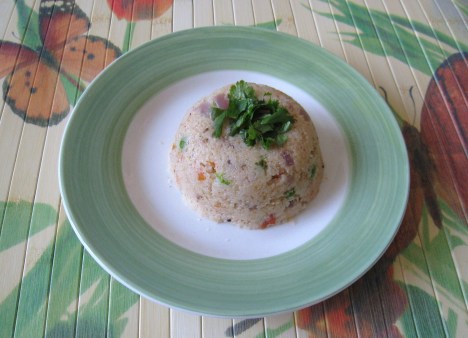So it was about time I made the Puranpoli myself. The idea was scary at first considering that it had to match up to my mom's Puranpoli for me to be satisfied. And in spite of using the same recipe it isn't really the same. I guess it can never be!

Anyhow. The recipe is considerably time consuming and tiring, but totally worth it.
Ingredients
For the Puran
- 2 cups chana/harbara dal
- 4 1/2 cups water
- 2 cups jaggery
- 1/6 to 1/5 cup sugar
- A pinch of turmeric
- 1 tabelspoon oil
- Nutmeg for seasoning
- 1 1/2 cups wheat flour
- 1/6 cup all purpose flour/maida
- A pinch of salt
- Oil
Pressure cook 2 cups chana dal with 4 1/2 cups of water. Add a pinch of turmeric and oil while cooking it. Take 3-4 whistles or as many as are needed to cook the dal well. Strain the dal so that no water remains. Retain the water as it can be used to make katachi amti. Mash the dal to as fine a paste as possible. I do this as I do not have a puranyantra here, and the mixer does not do the job. The puranyantra is used after you have added the jaggery, but since it is difficult to get all the equipment outside of India I mash the dal and then knead it at the end too.
Now heat some ghee in a skillet and add the mashed dal to it. Also add the jaggery and sugar and stir continuously. Make sure that the mixture does not stick to the bottom as the burnt smell will spoil the desired aroma. Keep stirring till the Puran is dry and thick. Also add some nutmeg to it. Let the puran cool. Knead it upon cooling so that it does not have any hard parts in it. The puran has to be consistently soft, as any hard part can tear the covering.
For the covering mix the wheat and all purpose flour with water and oil. Knead the so that it is soft and almost sticky. Use oil generously when kneading the dough and let it rest for at least an hour. The more the dough rests the better.
When making the actual poli take a small portion of the dough and knead it again. Roll it out in a small circle. Take a bigger portion of the puran and close it inside the dough as if wrapping a ball. Close the dough so that the puran does not comes out from anywhere. Now roll out the ball gently into thin roti using rice flour. It is important to roll gently as the puran can come out due to excess pressure. It is common that the poli tears when we are new at it.
Heat a griddle and roast the puranpoli on medium flame until it is golden brown on both sides. Serve with ghee and experience bliss!



